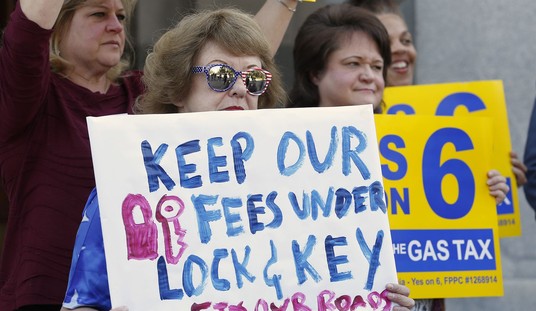After recent tutorials advising lone jihadists how to commit knife and vehicle attacks, the Islamic State’s latest issue of Rumiyah magazine counsels terrorists on waging arson attacks — with a Dallas megachurch suggested as a possible target.
The October issue of ISIS’ Rumiyah — which is published in multiple languages including English, Russian, German, Croatian, Pashto, Urdu and Indonesian — instructed lone jihadists to launch random knife attacks, with a warning to pick a suitable blade for the job.
The November issue moved on to a different type of lone attack tutorial — or “just terror” attacks, as ISIS calls them — encouraging jihadists to use a heavy vehicle such as a U-Haul to plow into a crowd.
And after Ohio State student Abdul Razak Ali Artan rammed his car into a group of people on a sidewalk, got out and began stabbing on Nov. 28, wounding 11 but claiming no lives, the December issue doubled back to the knife tutorial with simpler, illustrated instructions.
The first issue of 2017 notes that “incendiary attacks have played a significant role in modern and guerrilla warfare, as well as in ‘lone wolf’ terrorism,” claiming a November fire at a furniture factory in Losino-Petrovsky, Russia, and highlighting scores of wildfires around Israel that month as incidents that “demonstrated the lethality of such an effortless operation.”
ISIS recommended arson as a simple terror tactic that arouses little suspicion in the planning stages “to destroy the property of the Crusaders and, in some cases, kill several of them, sending them from the fire of this world to the inferno of Hellfire.”
“Because many flammables are a part of everyday living, arson attacks are extremely difficult to prevent. Indeed, no more than a large container of gasoline (petrol) is needed for a successful attack. Of course, the gasoline can be acquired from any local gas station, where it is filled into the container,” the article continues. “This procedure should not arouse any suspicion, as it is quite common to follow, especially when obtaining gas for a lawnmower, amongst other reasons.”
Instructions then follow on how to make a Molotov cocktail, emphasizing that “due to the fast rate at which gasoline burns away, it is better that one transforms the contents of his Molotov cocktail into a sticky, long-burning napalm solution, to ensure – by Allah’s permission – that the intended target properly catches fire before the gas finishes burning.”
To make napalm, ISIS recommends jihadists save Styrofoam from toy packaging or pick up “foam cups used for hot coffee at donut shops.”
Suggested target locations for arson attacks, the magazine states, “include houses and apartment buildings, forest areas adjacent to residential areas, factories that produce cars, furniture, clothing, flammable substances, etc., gas stations, hospitals, bars, dance clubs, night clubs, banks, car showrooms, schools, universities, as well as churches, Rafidi [Shiite] temples, and so forth. The options are vast, leaving no excuse for delay.”
The article includes a large photo of the First Baptist Church in Dallas, along with its address and the caption, “A popular Crusader gathering place waiting to be burned down.”
Jihadists are advised to time their arson “preferably in the later part of night to the early hours of morning when people are generally asleep,” and instructions are offered on how to block off exits to inflict casualties.
“Initiating the arson attack from inside the building will allow the fire to rage before grabbing the attention of those outside. If one does not have formal access to the building, then he can seek alternative ways to breach the building’s security while undetected,” jihadists are told. “An example of this is accessing the building during opening hours, while securing a suitable location to hide until closing time, exiting only when the coast is clear to commence the attack.”
For forest fires, ISIS’ remedial guide tells would-be arsonists to look for dry brush, “as fire cannot endure in damp or wet environments.”
In each case, ISIS tells jihadists to ignite the blazes “from a safe distance.”
“Throughout execution, one should avoid pouring gasoline directly from a container on any fires, as this could result in fire spreading to the container and thus himself catching fire,” the article states. “Instead, once an area is properly dowsed, he should ignite the gas from a safe distance or hurl a burning Molotov cocktail on the area if possible.”
“Ideally, one should strive to maximize the just terror he inflicts, by executing multiple, simultaneous attacks, while following the same guidelines.”
While jihadists previously have been advised to leave claims attributing the attack to the Islamic State via social media posts or notes, ISIS wants arsonists to get out their spray paint or Sharpies and go big.
“One example is merely carrying along a spray paint canister or thick permanent marker and writing therewith some words on a wall or on the ground near the target declaring that the attack was carried out by a soldier of the Islamic State,” the article suggests, adding that jihadists can also tie a note to “taunt and enrage the disbelievers” around a brick and chuck it “through the window of an occupied property close to the scene of the attack.”
“Arson attacks should in no way be belittled. They cause great economic destruction and emotional havoc and can be repeated very easily. Even if such attacks do not always result in the killing of the enemies, Allah has promised to reward the mujahid for simply harming and enraging them,” ISIS concludes.










Join the conversation as a VIP Member